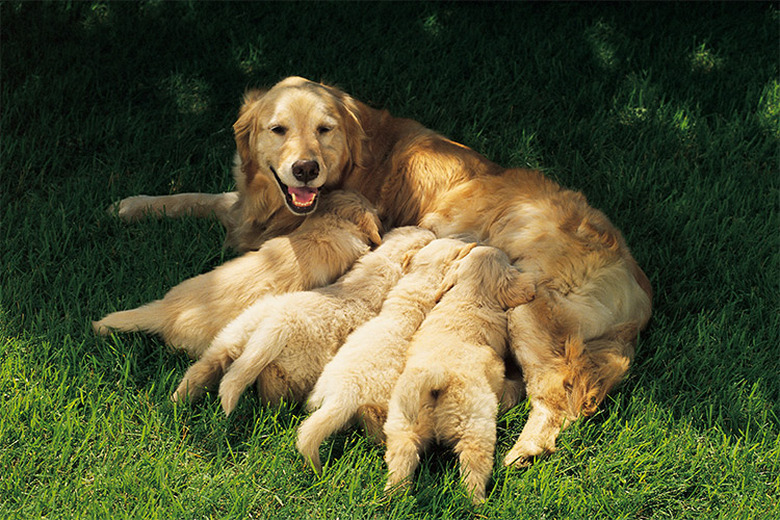Can You Count A Dog's Nipples To Predict Litter Size?
Have you ever heard of the saying you can tell a dog's litter size by counting her nipples? If your dog is expecting her first litter, and you're curious, you might try it, but it's actually an old belief that doesn't have any scientific backing.
Dog Nipples Do Not Predict Litter Size
Dog Nipples Do Not Predict Litter Size
Telling a dog's litter size by the number of nipples she has is an old belief. This simply isn't true. Typically, large or small, male or female, dogs have eight to 10 nipples. This number can vary, but this is the average count. When a dog is pregnant all her mammary glands will prepare to produce milk. The size of the litter she is carrying does not play a factor. Larger breeds tend to have more puppies than smaller breeds, but the number of puppies will vary from dog to dog. The only accurate way to know how many puppies your dog will have is through your veterinarian, who can estimate the size of the little through palpation, ultrasound or x-rays.
Ways to Detect Pregnancy in Dogs:
Early Palpation
Around 28 days, a veterinarian use a technique called palpation — basically gently feeling your doggy's pregnant belly with one or both hands. However, at this early stage it is difficult for your vet to get an accurate count. The size and weight of your dog play a factor. Also, the uterus may be resting high, making it difficult for your vet to get an overall feel.
Ultrasound
More and more, veterinarians are relying on ultrasounds for early diagnosis. Ultrasounds are noninvasive and effective. With an abdominal ultrasound, the gestational sacs in a pregnant dog can be seen in as early as 20 days, and typically a puppy's heartbeat can be picked up around 30 days. Ultrasounds are often used between 30 and 45 days when a dog is too thick to palpate, yet the puppies' skeletons have yet to develop enough for radiographs.
X-Rays
As far as accurate puppy counts, ultrasounds do have their drawbacks, especially in small litters. Depending on how the puppies are positioned, it can be difficult to tell if the probe is picking up two puppies or two different imagines of the same one. After 45 days, radiographs tend to be a veterinarian's method of choice. By this time, the skeletons are formed and easier to count, potential deformities can often be seen as well potential birthing problems.
